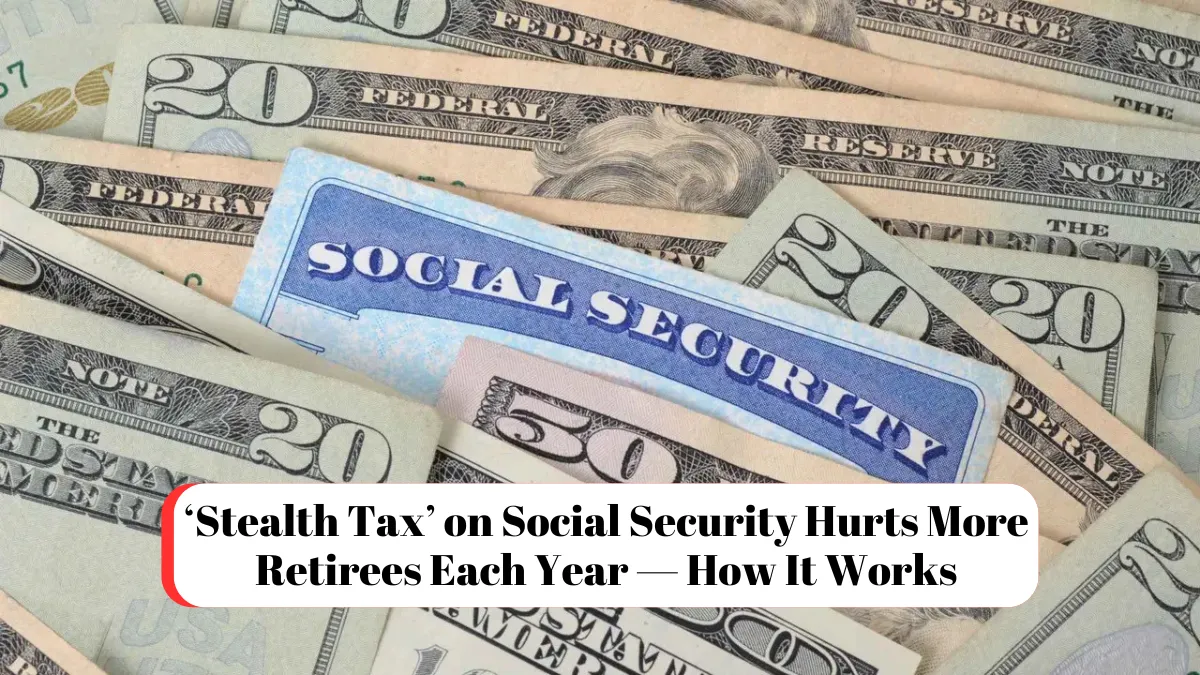Social Security benefits are primarily based on the amount you contributed through payroll taxes over your working years. However, if your Social Security income, along with other sources of income, surpasses a certain threshold in retirement, you may be subject to personal income taxes. Due to annual cost-of-living adjustments (COLAs), an increasing number of retirees are now facing these “stealth” taxes on their Social Security benefits, according to financial experts.
While Social Security benefits are adjusted annually for inflation through COLAs, the income tax thresholds for recipients have remained unchanged since benefits were first taxed in 1984. As a result, any increase in benefits leads to more seniors being subject to income taxes on their Social Security income.
Why Seniors Are Paying Taxes on Their Benefits
Each year, an increasing number of seniors are reaching the income thresholds that trigger taxes on their Social Security benefits.
“This is a stealth tax,” said Jordan Gilberti, senior lead planner and certified financial planner at Facet, in an interview with USA Today. “While everyone is aware that Social Security is taxed, few realize how it’s taxed. If people understood, their jaws would drop.”
He’s not alone in this assessment. David Freitag, a financial planning consultant and Social Security expert at MassMutual, also called it a “stealth tax” during an interview with CNBC.
Individuals with provisional income exceeding $25,000, or joint filers surpassing $32,000, may have up to 50% of their Social Security benefits taxed. For those with provisional income above $34,000 (individuals) or $44,000 (joint filers), up to 85% of Social Security income is taxable.
Provisional income is calculated by adding your gross income, tax-free interest from bonds, and 50% of your Social Security benefits. For instance, if you earn $50,000 annually and receive $1,500 a month in Social Security, you would be taxed on 85% of your $18,000 yearly benefits, or $15,300.
Due to historically high cost-of-living adjustments (COLAs) in recent years, more seniors are now facing the 85% tax rate. However, if the income thresholds had been adjusted for inflation, the original $25,000 threshold for individuals would now be approximately $73,000, and the $32,000 threshold for joint filers would have risen to $93,200, according to The Senior Citizens League, a nonpartisan advocacy organization.
The Biggest Concern With Tax Rules and Social Security
Critics argue that the tax rules surrounding Social Security unfairly affect older Americans who rely on the program for a significant portion of their retirement income. A survey by The Senior Citizens League revealed that 58% of older taxpayers believe the Social Security thresholds should be adjusted.
“This failure to update the income thresholds is seen by many older taxpayers as a form of double taxation and is even described as ‘ageist’ in the feedback we receive,” said Mary Johnson, Social Security and Medicare policy analyst at The Senior Citizens League, in a press release.
However, convincing U.S. lawmakers to address the issue has been difficult, mainly because seniors have been excluded from the process.
“When discussions about changes to Social Security and Medicare occur, senior constituents or advocates are never invited to be part of commissions or negotiations,” Johnson explained to USA Today. “We’ve never been asked to sit at the table.”
In nearly a dozen states, seniors may also be required to pay state taxes on their Social Security benefits, in addition to federal taxes. States that may tax some or all of these benefits include Colorado, Connecticut, Kansas, Minnesota, Missouri, Montana, Nebraska, New Mexico, Rhode Island, Utah, and Vermont.
How Seniors Can Reduce Taxes on Their Social Security Income
For seniors looking to reduce or eliminate taxes on their Social Security income, options are limited. One approach is to lower your provisional income, though this may not be practical if you rely on that income to cover living expenses.
A more effective strategy is converting your 401(k) or traditional IRA to a Roth IRA. Since Roth IRA distributions don’t count as provisional income, they won’t trigger taxes on your Social Security benefits. However, be aware that you’ll need to pay taxes on the amount you convert.
Gilberti recommends considering Roth conversions before age 63, as your Medicare premiums deducted directly from your Social Security are based on income from the past two years.
Conclusion:
The “stealth tax” on Social Security benefits is an issue that continues to affect more retirees each year. With the income thresholds remaining the same since 1984, an increasing number of seniors find themselves paying taxes on their benefits due to cost-of-living adjustments. To avoid surprises, it’s important for retirees to understand how this tax works and consider strategies to minimize its impact on their income. Planning ahead can help ensure a more financially secure retirement.
FAQs:
What is the “stealth tax” on Social Security?
The “stealth tax” refers to the taxation of Social Security benefits, which affects more retirees each year due to inflation adjustments that push their income over tax thresholds.
At what income level do Social Security benefits become taxable?
Individuals with provisional income above $25,000 and joint filers above $32,000 may pay taxes on up to 50% of their benefits. For higher incomes, up to 85% of Social Security can be taxed.
How can I reduce taxes on my Social Security income?
You can reduce taxes by converting traditional retirement accounts like 401(k)s or IRAs to Roth IRAs, as Roth distributions do not count as provisional income.
Why are more seniors paying taxes on their Social Security benefits?
Due to cost-of-living adjustments (COLAs), Social Security benefits have increased, pushing more retirees into taxable income brackets without corresponding increases in the income thresholds.

